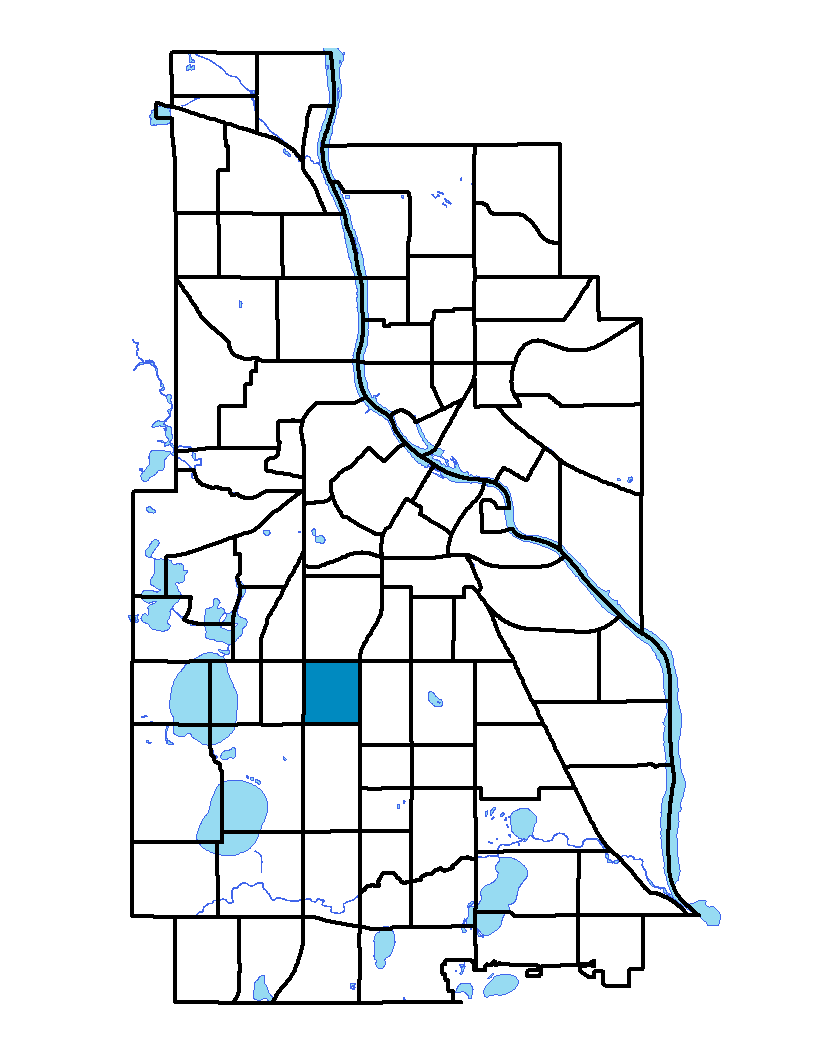Lyndale neighborhood, located in south-central Minneapolis, is bound on the north by Lake Street, on the east by Interstate 35W and Stevens Avenue, on the south by 36th Street and on the west by Lyndale Avenue South. The neighborhood was named for Lyndale Avenue, which in turn takes its name from Lyndale farm, a 1,400-acre farm owned by Hon. William S. King. The name of the farm was in honor of Mr. King's father, Rev. Lyndon King, an itinerant Methodist minister of northern New York, who was named for Josiah Lyndon, colonial governor of Rhode Island in 1768-1769. The neighborhood is predominantly residential, with a large percentage (about 36 percent) of land in parcels occupied by multifamily residential uses. Commercial uses tend to concentrate along Lake Street. The Lyndale neighborhood has one of the highest populations of artists in the nation.
To learn more about the neighborhood association visit: www.lyndale.org
Indicator Details
| Indicators | Primary Domain | Indicator Value |
Rank |
Tier |
|---|---|---|---|---|
| High School Graduation Rate | Educational Opportunities | -% | - | Data N/A |
| School Readiness Scores | Educational Opportunities | -% | - | Data N/A |
| Proximity to Brownfield Sites | Environmental Hazards | 0.0% | 1 | Top |
| School Proximity to Traffic | Environmental Hazards | 0.0% | 1 | Top |
| Offsite Alcohol Outlets | Neighborhood Characteristics | 1 | 6 | Top |
| Chronic School Absence | Health Systems and Public Safety | 33.3% | 10 | Top |
| Household Transportation Costs | Transportation | 14.4% | 14 | Top |
| Walkability | Neighborhood Characteristics | 79 | 17 | Top |
| Reading Proficiency | Educational Opportunities | 31.7% | 18 | Top |
| Food Desert | Neighborhood Characteristics | 66.7% | 27 | Top |
| Commute Mode Share | Transportation | 34.3% | 31 | Middle |
| Business Retention | Economic Health | 2.9% | 33 | Middle |
| Long-Term Unemployment | Employment Opportunities | 5.0% | 35 | Middle |
| Transit Accessibility | Transportation | 355.1 | 36 | Middle |
| Low Birth Weight | Health Systems and Public Safety | 6.7% | 36 | Middle |
| Local Business Vitality | Economic Health | 55.5% | 41 | Middle |
| Age of Housing | Housing | 86.4% | 43 | Middle |
| Preschool Enrollment | Educational Opportunities | 49.4% | 43 | Middle |
| Residential Mobility | Social Cohesion | 78.7% | 46 | Middle |
| Motor Vehicle Collisions | Health Systems and Public Safety | 7.2 | 47 | Middle |
| Employment Rate | Employment Opportunities | 67.3% | 50 | Middle |
| Violent Crime | Health Systems and Public Safety | 54.3 | 51 | Middle |
| Preventable Hospitalizations | Health Systems and Public Safety | 3.4 | 56 | Middle |
| Travel Time to Work | Employment Opportunities | 23.2 minutes | 59 | Bottom |
| Excessive Housing Cost Burden | Housing | 35.9% | 62 | Bottom |
| Vacancy Rates | Housing | 10.9% | 63 | Bottom |
| Voter Participation | Social Cohesion | 18.1% | 65 | Bottom |
| Proximity to Superfund Sites | Environmental Hazards | 55.2% | 66 | Bottom |
| Blood Lead Levels in Children | Housing | 6.4% | 66 | Bottom |
| Toxic Releases from Facilities | Environmental Hazards | 56.9% | 67 | Bottom |
| Residential Proximity to Traffic | Environmental Hazards | 29.3% | 68 | Bottom |
| Access to Mainstream Financial Services | Economic Health | 36.7% | 69 | Bottom |
| Pedestrian Connectivity | Transportation | 95.4 | 72 | Bottom |
| Public Assisted Households | Employment Opportunities | 50.9% | 73 | Bottom |
| Adult Educational Attainment | Educational Opportunities | 75.7% | 75 | Bottom |
| Tree Cover | Natural Areas | 25.3% | 77 | Bottom |
| Access to Parks and Open Space | Natural Areas | 1.0% | 77 | Bottom |

